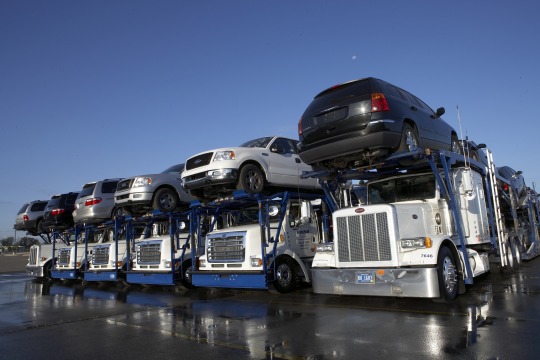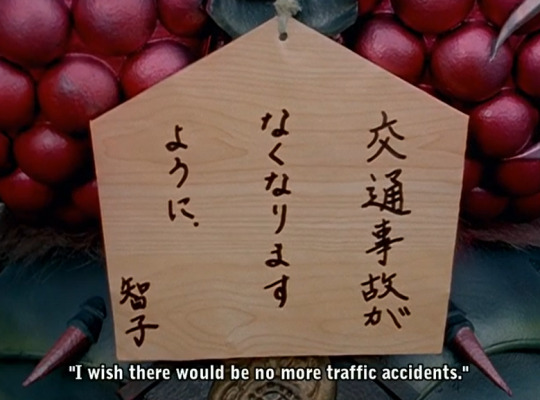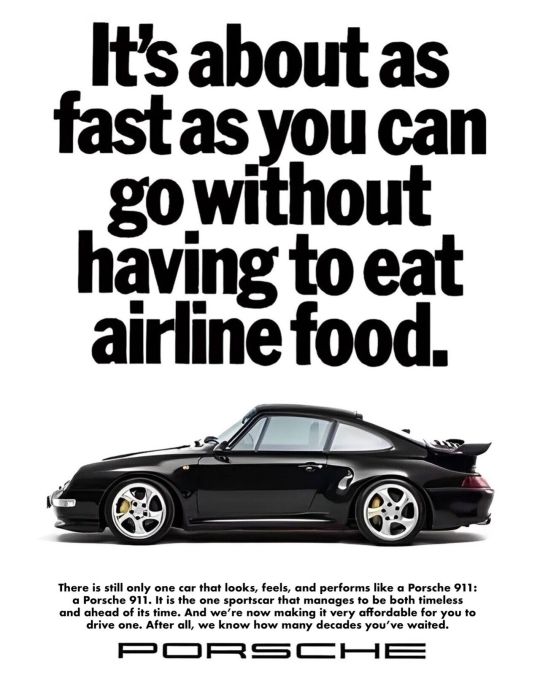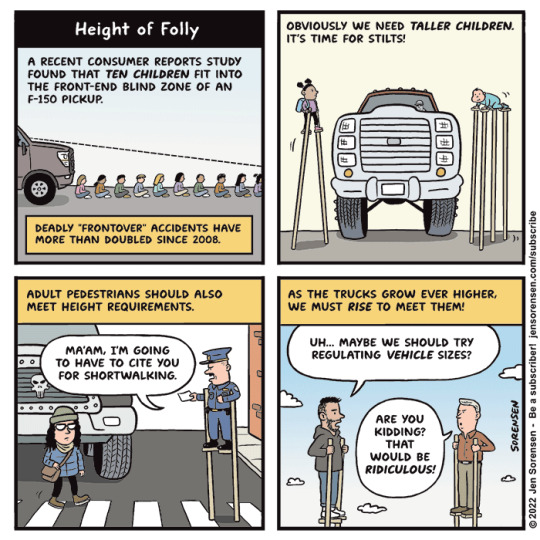#transport car
Text
Preparing for Vehicle Transport: Checklist for Owners
Transporting a vehicle can be a complex and daunting process, whether you're relocating, selling a car, or shipping a vehicle for other reasons. Proper preparation is essential to ensure a smooth and stress-free car transport experience. This comprehensive checklist outlines the key steps and considerations for vehicle owners to follow when preparing for vehicle transport.
https://www.carbikemovers.com/blog/preparing-for-vehicle-transport-checklist-for-owners/121
#vehicle transport#car transport services#Car Transportation#car shifting#Bike Transport#bike transport services#bike parcel service#bike courier service#car transfer#Car shifting service#transport car#car transporters#move car#car shipping#car transportation charges#car moving service#car Transport by Train#car parcel#car transport service near me#transport service near me#Car Transportation Service#Car Transportation Quotes#Car Carrier Price#Car Transport Charges#allindia#Carbikemovers
1 note
·
View note
Text

Enjoy tours by luxury black car service
City Tours: Discover the charm and beauty of Texas cities with our customized city tour packages, guided by knowledgeable chauffeurs who will take you to iconic landmarks and hidden gems.
Embark on a journey of discovery with our exclusive black car service in Texas, tailored for immersive city tours that unveil the charm and beauty of the Lone Star State. Our customized tour packages are guided by knowledgeable chauffeurs who will navigate you through iconic landmarks and hidden gems, offering insightful commentary along the way. Experience the richness of Texas culture and history in unparalleled comfort and style with our premium black car service for city tours. thanks limocartx
#Car Movers Near Me#transport car#transport#walkable cities#bikeable cities#Indian Car Transport Company#Price to Transport Car by Train#Best Car Transport Companies in India#automotive#cars#Car Transportation#Car Transport#car transport#car carrier#car transporters#Car Transport Services#Car Transportation Service#Car Transport by Train#Car Transport Charges#Car Transportation Charges#Car Transport Companies#Car Transport Company#Car Transportation Services Near Me#Car Transport India#Car Transport Website#Car Transport India Cost#Car Transport by Train in India#Car Transport Near Me
0 notes
Text
How much does it cost to ship a car - USA
Explore the seamless process of car transportation with our unparalleled service. Wondering, "How much does it cost to ship a car?" We provide transparent pricing and ensure your vehicle reaches its destination safely. Our expertise in handling diverse transport needs guarantees a smooth experience. Discover competitive rates and reliable service as we prioritize the security of your vehicle. Whether you're relocating or selling a car, our commitment to excellence ensures cost-effectiveness and peace of mind. Simplify the logistics of car transport and get a quote today. Experience hassle-free solutions for all your transport queries – from how much to transport a car to efficient and timely deliveries.

0 notes
Text




41K notes
·
View notes
Text
#i had this idea for a poll last week bc i think car names are fun#and i finally got polls today#i would love functional public transportation but that's not my reality so if i'm gonna depend on a car i will name it#my car's name is clyde :)#after the tortoise in elementary
18K notes
·
View notes
Text

Actual hell country
#every day it gets worse here#as a disabled person who cannot drive for health reasons#and couldn't afford a car anyway#walkable amenities are essential for me#sure there's public transport but it can be pretty unreliable#uk politics
6K notes
·
View notes
Text

If they're going to make people ride bikes and scooters in traffic, then it should at LEAST be legal to do the Snow Crash thing where you use a hook-shot-style harpoon to catch free rides from cars.
Urban Planning Opinion Progression [Explained]
Transcript Under the Cut
Typical urban planning opinion progression
[Each panel is connected to a point on a timeline]
Cueball: I wish there wasn't so much traffic to get into the city. They should put in more lanes.
Megan: And more parking.
Megan: Parking is so bad here.
Knit Cap: I have to go to Amsterdam for work next week. I hear they all ride bikes there.
Ponytail: Bikes are fine but people shouldn't ride them in the street! I worry I'm going to hit someone!
Cueball: It would be nice if we had better transit options!
Cueball: I tried a scooter. It was fun but I wish there were more bike paths.
Megan: It's funny how widening roads to speed up traffic makes them more dangerous to walk near, making driving more necessary and creating more traffic.
Megan: Really makes you think.
Knit Cap: Visiting the Netherlands was cool!
Knit Cap: Amsterdam is really neat.
Cueball: We've ceded so much of our land to storing and moving cars, with the rest of us tiptoeing around the edges and making drivers mad for trespassing on "their" space.
Cueball: Even though we're the ones in danger from them!
Megan: Those giant trucks with front blind spots that keep hitting kids should be illegal.
Knit Cap: We should be more like the Netherlands.
Knit Cap: They design their street to prioritize...
Cueball: The problem is car culture. It's systemic.
Cueball: I don't know if we can fix it.
Megan: People approach road planning decisions from the point of view of drivers because that's how we're used to interacting with the city, so we make choices that make it more car-friendly.
Megan: It's a vicious cycle.
Knit Cap: Netherlands! Netherlands! Netherlands! Netherlands!
Cueball: Anything that makes a city a worse place to drive in makes it a better place to live, short of scattering random tire spikes on the road.
Megan: Honestly, I think the city council should consider the tire spikes thing.
#xkcd#xkcd 2832#urban planning opinion progression#webcomics#urban planning#transport#car transport#walkable cities#bikeable cities#cars
5K notes
·
View notes
Text
#random polls#poll time#tumblr polls#polls#my polls#transportation#I think clown car tbh#fits a load of people#but hbu?
930 notes
·
View notes
Text
Lies, damned lies, and Uber

I'm on tour with my new, nationally bestselling novel The Bezzle! Catch me TONIGHT in PHOENIX (Changing Hands, Feb 29) then Tucson (Mar 10-11), San Francisco (Mar 13), and more!

Uber lies about everything, especially money. Oh, and labour. Especially labour. And geometry. Especially geometry! But especially especially money. They constantly lie about money.
Uber are virtuosos of mendacity, but in Toronto, the company has attained a heretofore unseen hat-trick: they told a single lie that is dramatically, materially untruthful about money, labour and geometry! It's an achievement for the ages.
Here's how they did it.
For several decades, Toronto has been clobbered by the misrule of a series of far-right, clownish mayors. This was the result of former Ontario Premier Mike Harris's great gerrymander of 1998, when the city of Toronto was amalgamated with its car-dependent suburbs. This set the tone for the next quarter-century, as these outlying regions – utterly dependent on Toronto for core economic activity and massive subsidies to pay the unsustainable utility and infrastructure bills for sprawling neighborhoods of single-family homes – proceeded to gut the city they relied on.
These "conservative" mayors – the philanderer, the crackhead, the sexual predator – turned the city into a corporate playground, swapping public housing and rent controls for out-of-control real-estate speculation and trading out some of the world's best transit for total car-dependency. As part of that decay, the city rolled out the red carpet for Uber, allowing the company to put as many unlicensed taxis as they wanted on the city's streets.
Now, it's hard to overstate the dire traffic situation in Toronto. Years of neglect and underinvestment in both the roads and the transit system have left both in a state of near collapse and it's not uncommon for multiple, consecutive main arteries to shut down without notice for weeks, months, or, in a few cases, years. The proliferation of Ubers on the road – driven by desperate people trying to survive the city's cost-of-living catastrophe – has only exacerbated this problem.
Uber, of course, would dispute this. The company insists – despite all common sense and peer-reviewed research – that adding more cars to the streets alleviates traffic. This is easily disproved: there just isn't any way to swap buses, streetcars, and subways for cars. The road space needed for all those single-occupancy cars pushes everything further apart, which means we need more cars, which means more roads, which means more distance between things, and so on.
It is an undeniable fact that geometry hates cars. But geometry loathes Uber. Because Ubers have all the problems of single-occupancy vehicles, and then they have the separate problem that they just end up circling idly around the city's streets, waiting for a rider. The more Ubers there are on the road, the longer each car ends up waiting for a passenger:
https://www.sfgate.com/technology/article/Uber-Lyft-San-Francisco-pros-cons-ride-hailing-13841277.php
Anything that can't go on forever eventually stops. After years of bumbling-to-sinister municipal rule, Toronto finally reclaimed its political power and voted in a new mayor, Olivia Chow, a progressive of long tenure and great standing (I used to ring doorbells for her when she was campaigning for her city council seat). Mayor Chow announced that she was going to reclaim the city's prerogative to limit the number of Ubers on the road, ending the period of Uber's "self-regulation."
Uber, naturally, lost its shit. The company claims to be more than a (geometrically impossible) provider of convenient transportation for Torontonians, but also a provider of good jobs for working people. And to prove it, the company has promised to pay its drivers "120% of minimum wage." As I write for Ricochet, that's a whopper, even by Uber's standards:
https://ricochet.media/en/4039/uber-is-lying-again-the-company-has-no-intention-of-paying-drivers-a-living-wage
Here's the thing: Uber is only proposing to pay 120% of the minimum wage while drivers have a passenger in the vehicle. And with the number of vehicles Uber wants on the road, most drivers will be earning nothing most of the time. Factor in that unpaid time, as well as expenses for vehicles, and the average Toronto Uber driver stands to make $2.50 per hour (Canadian):
https://ridefair.ca/wp-content/uploads/2024/02/Legislated-Poverty.pdf
Now, Uber's told a lot of lies over the years. Right from the start, the company implicitly lied about what it cost to provide an Uber. For its first 12 years, Uber lost $0.41 on every dollar it brought in, lighting tens of billions in investment capital provided by the Saudi royals on fire in an effort to bankrupt rival transportation firms and disinvestment in municipal transit.
Uber then lied to retail investors about the business-case for buying its stock so that the House of Saud and other early investors could unload their stock. Uber claimed that they were on the verge of producing a self-driving car that would allow them to get rid of drivers, zero out their wage bill, and finally turn a profit. The company spent $2.5b on this, making it the most expensive Big Store in the history of cons:
https://www.theinformation.com/articles/infighting-busywork-missed-warnings-how-uber-wasted-2-5-billion-on-self-driving-cars
After years, Uber produced a "self-driving car" that could travel one half of one American mile before experiencing a potentially lethal collision. Uber quietly paid another company $400m to take this disaster off its hands:
https://www.economist.com/business/2020/12/10/why-is-uber-selling-its-autonomous-vehicle-division
The self-driving car lie was tied up in another lie – that somehow, automation could triumph over geometry. Robocabs, we were told, would travel in formations so tight that they would finally end the Red Queen's Race of more cars – more roads – more distance – more cars. That lie wormed its way into the company's IPO prospectus, which promised retail investors that profitability lay in replacing every journey – by car, cab, bike, bus, tram or train – with an Uber ride:
https://www.reuters.com/article/idUSKCN1RN2SK/
The company has been bleeding out money ever since – though you wouldn't know it by looking at its investor disclosures. Every quarter, Uber trumpets that it has finally become profitable, and every quarter, Hubert Horan dissects its balance sheets to find the accounting trick the company thought of this time. There was one quarter where Uber declared profitability by marking up the value of stock it held in Uber-like companies in other countries.
How did it get this stock? Well, Uber tried to run a business in those countries and it was such a total disaster that they had to flee the country, selling their business to a failing domestic competitor in exchange for stock in its collapsing business. Naturally, there's no market for this stock, which, in Uber-land, means you can assign any value you want to it. So that one quarter, Uber just asserted that the stock had shot up in value and voila, profit!
https://www.nakedcapitalism.com/2022/02/hubert-horan-can-uber-ever-deliver-part-twenty-nine-despite-massive-price-increases-uber-losses-top-31-billion.html
But all of those lies are as nothing to the whopper that Uber is trying to sell to Torontonians by blanketing the city in ads: the lie that by paying drivers $2.50/hour to fill the streets with more single-occupancy cars, they will turn a profit, reduce the city's traffic, and provide good jobs. Uber says it can vanquish geometry, economics and working poverty with the awesome power of narrative.
In other words, it's taking Toronto for a bunch of suckers.

If you'd like an essay-formatted version of this post to read or share, here's a link to it on pluralistic.net, my surveillance-free, ad-free, tracker-free blog:
https://pluralistic.net/2024/02/29/geometry-hates-uber/#toronto-the-gullible

Image:
Rob Sinclair (modified)
https://commons.wikimedia.org/wiki/File:Night_skyline_of_Toronto_May_2009.jpg
CC BY 2.0
https://creativecommons.org/licenses/by-sa/2.0/deed.en
#pluralistic#uber#hubert horan#fraud#toronto#geometry hates cars#urbanism#ontpoli#olivia chow#self-regulation#transport#urban planning#taxis#transit#urban theory#labor#algorithmic wage discrimination#veena dubal
902 notes
·
View notes
Text

2025 Ford Mustang GTD
#ford#ford mustang#car#cars#tumblr#auto#autos#automobile#automotive#automobiles#carporn#car porn#2023#new model#mustang#transportation#car blog#transportation blog#transportationlover3
1K notes
·
View notes
Text
The development of ever faster and ever more high-performing vehicles can be understood as an attempt to minimize the loss of time through technological and competitive means: whoever can afford the most horsepower gets ahead in the rat race. Since everyone else is also upgrading his or her car, the contest simply repeats itself at an ever higher level of the technological ladder. At a certain point, time-wasting speed can only be raised by exponentially increasing the risk of an accident. The competition then takes on other forms: taller, tank-like cars satisfy their passengers’ demands for security to the same degree that they endanger the lives of children, pedestrians, cyclists and passengers in smaller cars. Along with the car’s high-speed capabilities, the technical amenities of its interior become a question of status. These determine who, sitting in traffic jams caused by car crashes, can spend the lost time in most comfort.
The Imperial Mode of Living: Everyday Life and the Ecological Crisis of Capitalism
434 notes
·
View notes
Text

Stunning Symmetry and Patterns Drone Photography by Costas Spathis
373 notes
·
View notes
Text

'It's about as fast as you can go without having to eat airline food.'
Porsche 911 advertisement (c. 1990).
881 notes
·
View notes
Text

302 notes
·
View notes
Photo

Height of Folly
According to Consumer Reports, 526 people died in "frontover" accidents in 2020, many of them children. Often these deadly events occur in driveways or parking lots. You can watch an NBC News report on the issue here (below the petition) that shows kids lined up in front of various trucks and SUVs. Or if that link expires, you can watch it here.
Keep this work sustainable by joining the Sorensen Subscription Service! Also on Patreon.
3K notes
·
View notes
